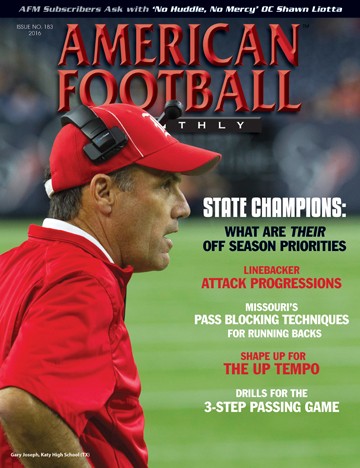Article CategoriesAFM Magazine
|
Subscribers Ask with Shawn Liotta part IIby: AFM Editorial Staff© More from this issue Shawn Liotta is the offensive coordinator at Clairton High School (PA), a team which averaged 59.9 points per game in 2014. Clairton also averaged 12.8 yards per play and 510 yards in total offense per game, even though the PIAA Mercy Rule was in effect in the second half of 12 of the 16 games his team played. His offense is aptly named the ‘No-Huddle, No Mercy’ offense. Along the way, Clairton’s quarterback, running back and wide receiver each set school records last fall. Liotta’s team became the second highest scoring offense in the history of high school football by amassing 958 points over their 16-game schedule. Coach Liotta recently completed a five-set series of DVDs, now available at AFMvideos.com. This includes, ‘Playing Fast and Winning Big,’ ‘The Run Game,’ ‘The Pass Game,’ ‘Screen Package,’ and ‘Game Pl....The full article can only be seen by subscribers.
|
|
|||||||
| HOME |
MAGAZINE |
SUBSCRIBE | ONLINE COLUMNISTS | COACHING VIDEOS |
Copyright 2025, AmericanFootballMonthly.com
All Rights Reserved





